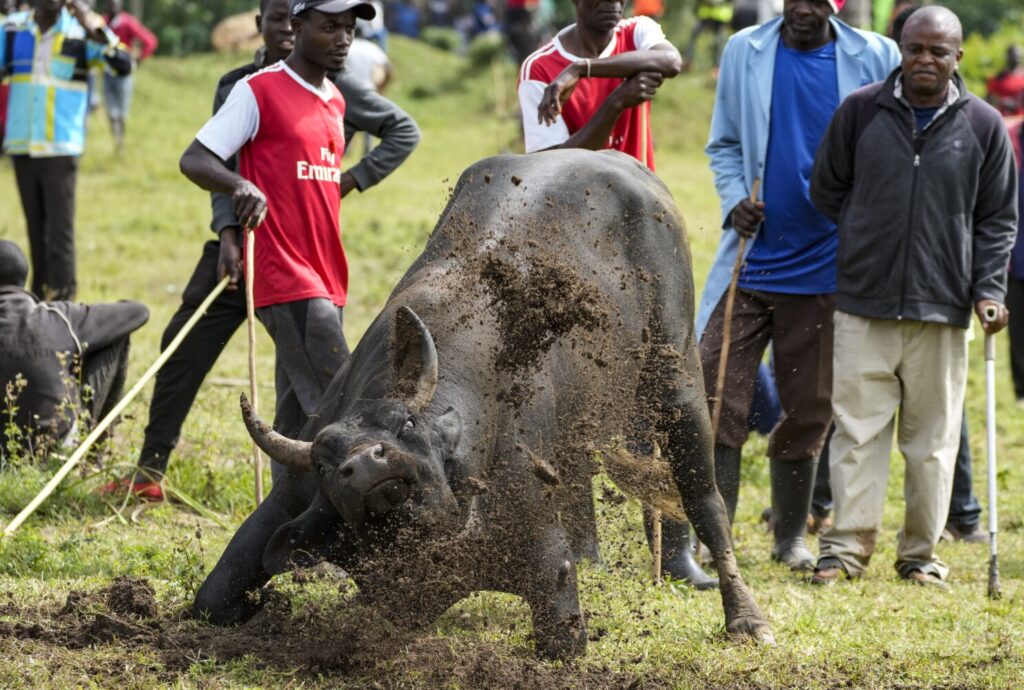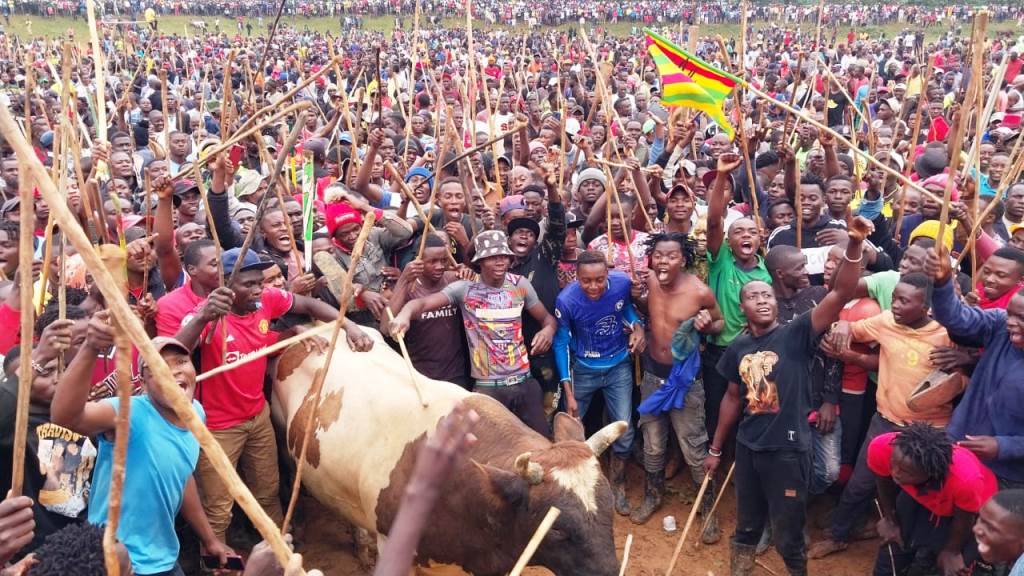Bullfighting in Kakamega is not a sport. It’s a ritual. A cultural anchor. A public display of strength and spirit that has survived for decades in Western Kenya.
This tradition is not imported. It’s deeply local. It belongs to the Luhya people. And every month, the bulls clash as hundreds cheer.
Also Read:10 Shocking Cultural Festivals in Kenya You Must See Now
A Detailed Explanation of Bullfighting in Kakamega
Bullfighting in Kakamega is not the Spanish kind. No matadors. No red capes. No bloodshed from spears or swords.
In Kakamega, bulls fight each other.
It’s about dominance. Energy. Crowd appeal. And when it’s over, the bulls live on to fight another day.
Where It Happens
Bullfighting matches happen in places like:
- Malinya Stadium
- Shinyalu
- Bukura
- Bukhungu
These are not tourist events. These are for the people. Men, women, elders, children—everyone shows up.
Why It Matters
Bullfighting isn’t about violence. It’s about pride.
Each bull represents a household. A family. A village.
Winning gives social status. Owners become local heroes. Bulls are named, praised, and pampered like celebrities.

How Bulls Are Trained
This is not random. Bulls are trained for months.
Owners walk them long distances. Feed them special diets. Play music. Give massages. Rub herbs. Limit their exposure to other bulls.
This builds both muscle and mind.
The Fight Day Ritual
On fight day, bulls arrive draped in bright colors. Some have charms tied to their horns.
There’s song. Drumming. Dancing. Crowds form a ring.
When released, bulls charge at each other.
Sometimes the fight ends in seconds. Sometimes it lasts over 30 minutes.
The bull that turns away first loses.
The Spirit Connection
Elders say bullfighting isn’t just physical. It’s spiritual.
Some owners consult traditional healers. Some use herbs and charms to “protect” or “curse” a bull. This layer of belief makes it sacred.
In this context, losing is not shameful. It means a stronger spirit prevailed.
The Economic Impact
Bullfighting creates jobs.
Trainers. Feed suppliers. Drummers. Vendors. Event organizers. Security.
During fight days, markets grow. Food stalls sell everything from roasted maize to nyama choma. Transport businesses thrive.
A winning bull can be sold for over KES 500,000.
It’s About Community

Bullfighting pulls communities together. It’s not just for fun. It’s a bonding event.
- Families reunite
- Elders tell stories
- Children watch and learn tradition
In Kakamega, culture is a form of unity. This is one of the few events where the entire village pauses to watch and cheer.
Safety Rules
Though the bulls are powerful, strict rules are followed.
- No weapons allowed
- Owners stay near their bulls
- Spectators are kept at a safe distance
- Events are policed and monitored
Injuries are rare.
Is Bullfighting Cruel?
Animal rights activists have raised concerns. They argue that forcing bulls to fight is abusive.
Supporters disagree.
They say the bulls are treated better than livestock raised for meat. They are loved, protected, and never killed.
Most live long lives and only fight once a month.
Modern vs Traditional
Urbanization is changing the game.
Younger people want music festivals. Live bands. Social media fame.
Still, bullfighting survives. Some events now feature DJs and MCs. Others are streamed live.
But at the core, the ritual remains.
Tourism and Attention
Bullfighting is drawing attention from:
- Local travelers
- International media
- Culture-focused tourists
Some tour companies now offer packages that include a bullfight day experience. These are carefully planned to respect local customs.
Not Just for Men
Traditionally, bullfighting was male-dominated.
Now, women are entering the space as:
- Bull owners
- Event organizers
- Commentators
Culture is evolving. And Kakamega is setting an example.

Government Response
The Kenyan government recognizes the cultural value.
There have been talks of formalizing bullfighting as a cultural heritage. This could mean better support, safety regulations, and promotional events.
But implementation is slow.
Challenges Ahead
Bullfighting faces several hurdles:
- Urban land pressure
- Misunderstanding from outsiders
- Lack of funding
- Pressure from animal rights groups
Still, it stands strong. Because it has roots.
The Future of the Sport
Bullfighting in Kakamega will not disappear.
It may change. It may blend with modern entertainment. But the spirit remains.
As long as there are bulls, songs, and spectators, this tradition will stay alive.
Frequently Asked Questions
1. Is bullfighting in Kakamega violent?
No. The bulls fight each other without human interference. There’s no blood sport involved.
2. Do the bulls die after the fight?
No. Bulls live and fight again. They are valuable animals and rarely harmed.
3. Where can you watch a bullfight in Kakamega?
Malinya Stadium is the most popular spot. Events are also held in Bukura, Shinyalu, and Bukhungu.
4. How often do bullfights happen?
Most happen monthly or during local festivals.
5. Can tourists attend?
Yes. But it’s important to go with a guide who understands the culture.
6. Are women involved in bullfighting?
Yes. Some own bulls, manage events, or report on them.
7. Do bulls get trained?
Yes. Bulls undergo physical and mental training for months.
8. What happens to a bull that loses?
It returns home. Some fight again. Others are retired.
9. Is bullfighting profitable?
Yes. A winning bull can fetch hundreds of thousands of shillings.
10. What makes a bull a champion?
Stamina, strength, training, and spiritual protection.


